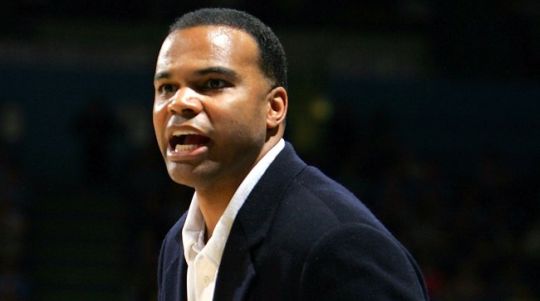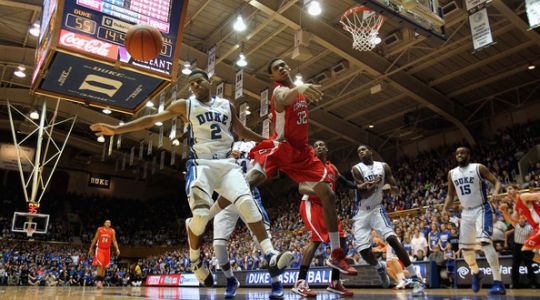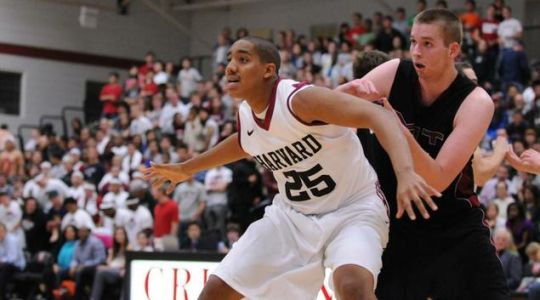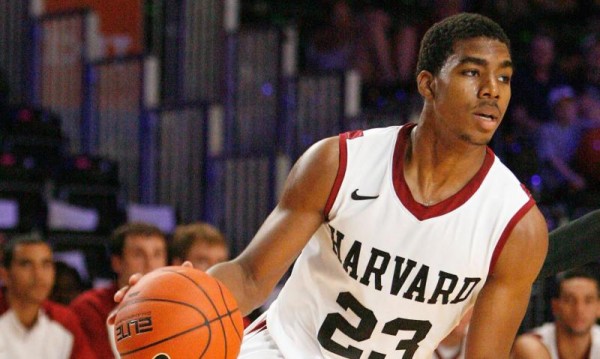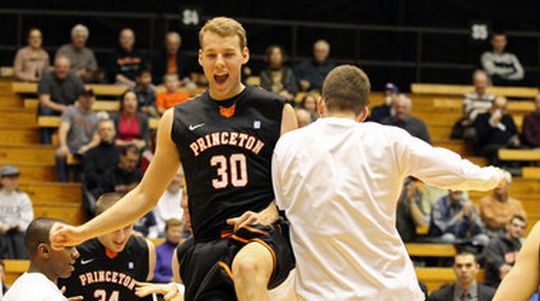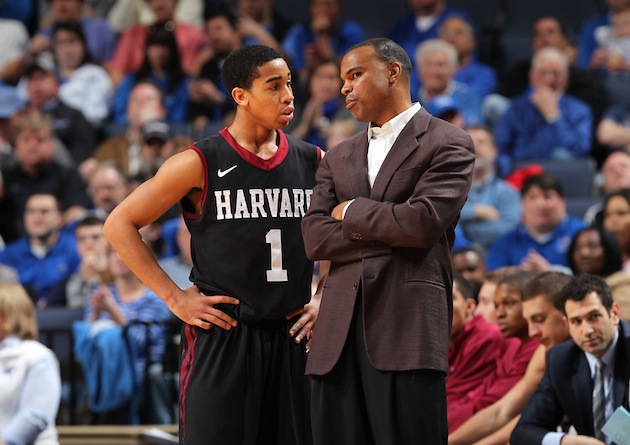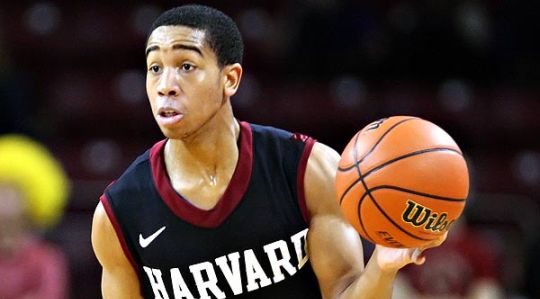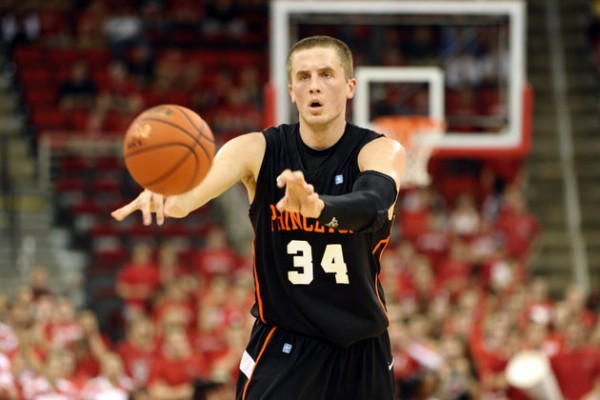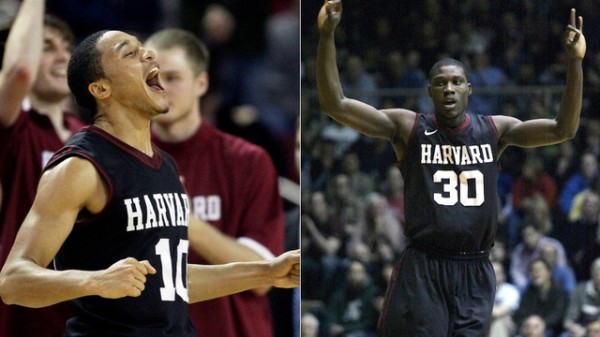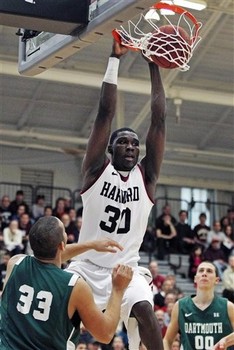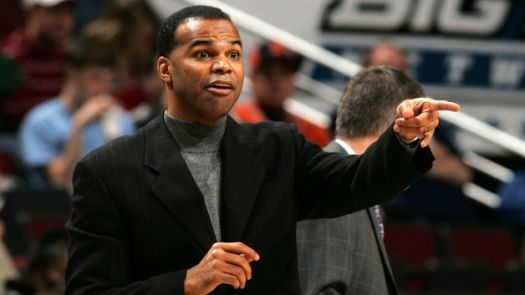2012-13 Ivy League Recap and Postseason Preview
Posted by Brian Goodman on March 17th, 2013Michael James is the RTC correspondent for the Ivy League. You can also find his musings on Twitter at @mrjames2006 and @ivybball.
Reader’s Take
A Look Back
It should be no surprise that the team that sprinted out to a 9-1 start took home the title in the 14-Game Tournament. The only shocking part is how it happened. For the second-consecutive year, Harvard entered the penultimate weekend of the season needing to beat just one team to all but clinch the league’s NCAA bid. Just like the 2011-12 campaign, in which the Crimson fell to Pennsylvania, bringing the two teams even in the loss column, Harvard lost for the 24th consecutive time at Jadwin Gymnasium, allowing Princeton to grab a virtual tie for first place. Then, the Crimson compounded its error, losing the next night to a surging Quakers squad at The Palestra and falling behind the Tigers in the Ivy standings for the first time this season. With just two games remaining, Harvard needed a home sweep of Columbia and Cornell, as well as a Princeton loss in one of its final three road contests to force a one-game playoff at The Palestra.
The hangover lasted well into the following weekend, as Harvard trailed Columbia by as many as eight early in the second half in front of a lethargic crowd before news arrived from New Haven that the Tigers trailed Yale by double digits. An 11-2 run over the final two minutes allowed the Crimson to slip past the Lions, and the Bulldogs withstood a late charge from Princeton to hand Harvard back a half-game lead and an opportunity to clinch a share of the Ivy title the next night. The Crimson did just that with a 65-56 win over Cornell on NBC Sports Net. A muted celebration followed, but most fans had already turned their attention to Providence, as Brown led Princeton by double-digits early in the second half. Roughly 100 fans remained in the arena with most huddled around computer screens watching the Bears-Tigers score updates. When Brown sank enough free throws to put Princeton away, Harvard had improbably clinched the Ivy title – the first time it had done so without the season-ending Pennsylvania-Princeton game mattering.
The dramatic final weekend capped off what was a surprisingly strong year for the league, after several All-Ivy caliber players unexpectedly dropped off rosters just before the season started. While the league will see its streak of three-straight years with at least three postseason invites come to an end, the Ivies still posted their second strongest showing as a conference in the Pomeroy era. The improvement came from the bottom, as the league avoided having a team rank worse than 275th nationally for the first time in at least a decade.
Conference Accolades
- Player of the Year: Ian Hummer, F, Princeton – At the start of the season, this was Hummer’s award to lose, and all he did was put together the finest year in his stellar career. The 6’7″ senior led the league in Offensive Rating among heavy usage players and finished second in both scoring and assist rate. Hummer averaged over 20 points and 10 rebounds in his two games against Harvard, single-handedly willing the Tigers to victory at Jadwin in a game that kept Princeton in the Ivy race. Hummer’s heroics often hid the struggles of his surrounding pieces. The extent to which he carried this team was never more evident than during Princeton’s final three games. After Yale successfully took him out of the game, allowing Hummer just eight shots and nine points, the Princeton captain scored 21 points against Brown, but on 5-of-15 shooting and with four turnovers. Hummer continued to struggle against the rival Quakers, shooting 1-of-7 from the field in the first half, but responded with a 16-point, second-half outburst to keep the Tigers from losing each of their last three Ivy contests.
Hummer’s off nights were still exceedingly rare, as he scored in double-digits in all but three games this season. His deceptive athleticism has consistently buoyed Princeton in games against higher-level opponents, giving the Tigers a player on the floor that can clearly play with the best in college basketball. While this is a Player of the Year award and not a career achievement award, it’s hard not to see this distinction as a fitting celebration of four years of a caliber of basketball that this league rarely gets to see.
- Coach of the Year: Tommy Amaker, Harvard – The Ivy League does not give out a formal Coach of the Year award, but it would be incredibly interesting to see who the main office picked in a year with some stellar candidates, including James Jones of Yale and Mike Martin of Brown. Amaker gets the nod here not just for winning the Ivy title, but for navigating a tricky season to continue his recent history of success. After the “Intro To Congress” cheating scandal rocked the campus and left Harvard without his star guard Brandyn Curry and forward Kyle Casey, Amaker faced a brutally tough non-conference slate with a starting five comprised of one returning starter, three lightly used sophomores and a freshman. The Crimson still managed to go 8-6 with road wins at Boston College and California, as well as a one-point loss at Saint Mary’s and a three-point loss at Massachusetts. Amaker also guided Harvard through a roller-coaster Ivy season, keeping his team focused even after it saw its lead slip away – a steady approach that led the Crimson to its third-straight Ivy title.
- Rookie of the Year: Siyani Chambers, Harvard – From start to finish, the dynamic Crimson point guard electrified the league, taking over several games with his strong scoring ability and his nifty passing. Chambers finished 64th nationally in both assist rate (32.8 percent) and three-point shooting percentage (44 percent), while ranking fourth in the Ivy League in free throw percentage and fifth in free throws made. His performance was bigger than his mere offensive output, as there were no other true point guards in the rotation, which forced Chambers to log the fifth highest percentage of team minutes of any player in the nation.
- Defensive Player of the Year: Shonn Miller, Cornell – The Ivy League has rarely had so many pure interior shot blockers and rebounders as it has at present, making the race for this award incredibly tight. Harvard’s Kenyatta Smith didn’t see enough floor time to qualify, and Brown’s Cedric Kuakumensah was a clear contender as well. Anyone that followed Cornell’s final four games without Miller patrolling the interior can attest to how important he was to that Big Red squad. Miller finished in the Top 100 nationally in defensive rebounding rate, block rate and steal rate – the only Ivy player to rank that highly in all three.
RTC All-Ivy First Team
- Wesley Saunders, G, Harvard – From the moment he led the team in scoring during Harvard’s preseason trip to Italy, everyone expected big things from the 6’5″ sophomore, and he delivered. Saunders had the second-highest offensive rating of any Ivy player using 24 percent or more of his team’s possessions and ranked 52nd nationally in free throw rate. Like Chambers, Saunders played grueling minutes – roughly 92 percent of his team’s total – and still took on the challenge of defending the opponent’s best perimeter scorer every night.
- Sean McGonagill, G, Brown – After a dismal 2011-12 campaign, in which McGonagill was forced to carry a terrible offense for vast stretches at a time, the junior guard finally got enough help to push the Bears all the way into the league’s upper division. The offense still ran through McGonagill, as he finished sixth in the league in assist rate and sixth in percentage of team shots taken, but the added talent around him allowed him to pick his spots and become a more efficient player. McGonagill’s most memorable performance was his final one this season, as he racked up 24 points, eight rebounds and five assists against Princeton in an 80-67 upset win.
- Shonn Miller, F, Cornell
- Ian Hummer, F, Princeton
- Siyani Chambers, G, Harvard
Game of the Year – Harvard 82, Dartmouth 77 (OT) – With less than two minutes remaining, a Harvard team that had looked so strong during the non-conference slate and had been nearly invincible at Lavietes Pavilion trailed Dartmouth by a seemingly insurmountable 10-point margin. Harvard guard Christian Webster buried a three-pointer to make the deficit seven with 90 seconds to play, but the Big Green made enough free throws to hold a six-point cushion with 45 ticks left. That’s when Webster drained another three and then knocked down another following a pair of Dartmouth free throws. Big Green guard John Golden came up empty on his trip to the stripe, and Chambers’ driving layup allowed Harvard to force overtime. The Crimson scored the first six points of the extra session and never looked back, completing a comeback win that, in hindsight, was critical to its NCAA hopes.
Final Power Rankings
- Harvard (19-9, 11-3 Ivy) – Ultimately, Harvard’s Ivy title hinged on one crucial coaching decision that Amaker made in the middle of the league season. The Crimson’s solidly Top 100 defense from the non-conference slate had been torn apart through the first six games of league play to the point that Harvard ranked dead last in the Ivies on that end of the floor. Enter Kenyatta Smith. The 6’8″, 250-pound sophomore had gone from a starter at the beginning of the year to a very lightly used reserve during December and January. With Harvard getting shredded inside, Amaker rolled the dice and went to the bench, and Smith delivered with an average of 17 points, eight boards and eight blocks during a home sweep of Pennsylvania and Princeton. The Crimson allowed just two of its final eight league opponents to eclipse a point per possession offensively after allowing five of its first six to do so.
- Princeton (17-11, 10-4) – The Tigers became only the second team in the Pomeroy era to win the conference efficiency margin battle without winning at least a share of the Ivy title (Pennsylvania, 2004). While that’s hardly consolation for a team that won all but one first place vote in the league’s preseason media poll, it does accurately convey how dominant Princeton was at times during Ivy play. Ultimately though, it was Princeton’s 3-2 mark in close games, compared to Harvard’s 6-1 showing, that proved to be the difference in the title chase.
- Yale (14-17, 8-6) – The Ivy League won’t get a third postseason invite this year, but the Bulldogs are certainly deserving. While Yale went 4-11 versus Division I competition in non-conference play, that mark came against the nation’s 30th most difficult schedule and included just four games against teams outside the Top 200. After a 1-3 start in league play, the Bulldogs closed with a 7-3 record, tied with Harvard and a game better than Princeton over those final 10 games. With a weaker non-conference schedule, the Bulldogs might have been looking at another appearance in the CIT.
- Brown (13-15, 7-7) – Speaking of teams that are postseason worthy, the Bears likely came within a blown six-point lead with two minutes remaining against Pennsylvania of making the CIT. Matt Sullivan sparked a tepid offense over the final five games of the season, allowing Brown to come within that collapse against the Quakers of going 5-0 down the stretch and hitting the .500 mark. Sullivan will graduate following this season, but the remainder of Brown’s key pieces will return, meaning the momentum should carry over to 2013-14.
- Pennsylvania (9-22, 6-8) – Finishing anywhere but first fails to please the Quaker faithful, but the job Jerome Allen did to guide this team to a 6-8 Ivy record is remarkable. Pennsylvania lost its best player just 10 games into the season and watched as other pieces of the rotation struggled through injuries. While points were lacking for vast swaths of time, the Quakers’ consistently solid defense kept it in games, allowing it to grab some victories even with a struggling offense.
- Dartmouth (9-19, 5-9) – At 2-3 with a near miss against Harvard, the Big Green looked like it was primed to leave the Ivy cellar for the first time since 2009. It ultimately accomplished the feat, but not before dropping five straight games – four by double digits – and sinking back to the bottom of the league with two weekends to go. Dartmouth’s offense saved the day, though, scoring over a point per possession in each of its final four games and running off a 3-1 record over that stretch to finish tied for sixth in the league with Cornell.
- Columbia (12-16, 4-10) – The 8-6 non-conference record with a win over Villanova seemed to justify the Lions’ selection as the third-place team in the Ivy preseason media poll. Then, the wheels fell off the wagon. Columbia stumbled out to a 1-4 league mark before an upset win over Harvard kept the Lions’ slim postseason hopes alive. The victory was merely a mirage, though, as Columbia went 2-6 over the remaining eight games to become the most disappointing Ivy team since 2005 Princeton. With guard Brian Barbour and center Mark Cisco graduating, it’s going to take a lot of effort for the Lions to avoid the basement of the Ivy standings next year as well.
- Cornell (13-18, 5-9) – Three Ivy weekends ago, the Big Red was a weekend home sweep of Pennsylvania and Princeton away from being a legitimate contender. Cornell lost both games to dash their hopes, but then things got really strange. Starting guard Johnathan Gray had already missed two games with an unspecified injury and was soon joined by guard Devin Cherry and All-Ivy forward Shonn Miller. Heading into the final weekend of the year, sophomore Galal Cancer decided to leave the Cornell program entirely. The result was an ugly six-game losing streak to close out the season, causing the Big Red to miss out on an upper division finish that had seemed like a lock just three weekends prior.
NCAA Representative – Harvard (Seed Prediction: #14): The daunting non-conference road schedule that had Harvard facing seven Top 100 Pomeroy teams will likely pay dividends in the seeding process. Sure, the Crimson only went 2-5 in those games, but it lost two of those five at the buzzer, potentially giving the committee something to think about from the “eye test” perspective. Enough conference tournament upsets have happened to push Harvard off the 15 line, while enough quality mid-majors have won their league’s bids to keep the Crimson from sneaking onto the 13 line. Any three-seed the Crimson would face will likely have very few weaknesses, but the best opponent for Harvard would be one that fouls a fair deal defensively and isn’t overly imposing inside. For the Crimson to pull off the upset, it will need to have its three-point shooters get hot and limit the second-chances defensively.
Other Expected Postseason Representatives: Princeton (CBI or CIT) – The Tigers’ non-conference struggles have pretty much erased any hopes of an NIT bid. Princeton will definitely receive an invite to the CBI or CIT. The CBI has been quite kind to the Tigers, as they’ve racked up three wins in their last two appearances in the 16-team tournament.





























